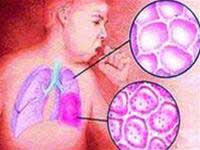 Bronchopneumonia is an acute inflammatory disease of the small bronchi, alveoli, and surrounding lung tissue. It typically involves diffuse inflammation in both lungs, making the condition severe and leading to respiratory failure. This disease is often encountered during the winter months, progresses rapidly, and can easily result in death.
Bronchopneumonia is an acute inflammatory disease of the small bronchi, alveoli, and surrounding lung tissue. It typically involves diffuse inflammation in both lungs, making the condition severe and leading to respiratory failure. This disease is often encountered during the winter months, progresses rapidly, and can easily result in death.
According to the World Health Organization (WHO), acute respiratory infections account for 50% of all illnesses in children under 5 years old and 30% in children aged 5 to 12. The mortality rate from acute respiratory infections is 75%.
Furthermore, WHO reports that the total number of deaths per year in children under 5 globally due to all causes is 13 million, with pneumonia accounting for 30% (4.3 million). In Vietnam, a child can suffer from acute respiratory infections 3 to 5 times a year (equating to 8 to 10 million instances), making it a leading cause of death among respiratory diseases.
Causes
Infection can be caused by the bacteria Haemophilus influenzae, followed by Staphylococcus, Streptococcus, parasites, fungi, and influenza viruses.
Predisposing Factors
– Cold climate and fluctuating weather during the winter-spring months.
– Young children, premature infants, and those who are malnourished.
– Bronchopneumonia also occurs in the elderly and immunocompromised individuals.
Other Causes: Environmental pollution, damp housing, and cigarette smoke. Allergic predisposition or children currently suffering from diseases such as measles, influenza, or whooping cough.
Symptoms of Bronchopneumonia:
– Children often have high fevers, ranging from 38 to 39°C.
– The elderly and malnourished children may not present with fever.
– Infected children are usually fatigued, irritable, have dry lips, and may eat or drink less.
– Initially, the cough is dry but later progresses to producing a lot of phlegm; children who do not know how to expectorate often swallow it.
– Difficulty breathing is characterized by rapid, shallow breathing exceeding 50 breaths per minute; flaring nostrils, retraction of the chest, cyanosis of lips and extremities, and in severe cases, respiratory rhythm disturbances may occur.
– Lung sounds may include moist rales, wheezing, and scattered rhonchi in one or both lungs.
– X-rays may reveal scattered opacities in both lungs.
– Blood tests may show elevated neutrophil levels.
Management of Bronchopneumonia
If detected and treated early, the disease can gradually resolve. Generally, bronchopneumonia is a severe condition, and delayed treatment can lead to death. Children and the elderly with bronchopneumonia need to be monitored in medical facilities. If the illness is severe, hospitalization is required, along with the following treatment measures:
– Antibiotic therapy to combat infection using medications such as penicillin, erythromycin, methicillin, and second or third-generation cephalosporins, or quinolones. Two or three types of antibiotics may be combined when necessary.
– For difficulty breathing and respiratory failure, provide oxygen therapy.
– Treat any electrolyte imbalances, cardiovascular issues, and vomiting if present.
– Comprehensive care: Keep the patient warm, ensure adequate nutrition and hydration daily. Cough relief may be achieved through traditional remedies such as white rose flowers boiled with rock sugar or decoctions of the leaves of the medicinal plant known as “Xạ căn.” For high fever, use antipyretics like paracetamol.
Prevention
– Encourage breastfeeding and a nutritious diet to strengthen the child’s immunity.
– Maintain environmental hygiene and cleanliness in preschools, schools, and maternity homes. Ensure children receive vaccinations according to regulations.
– Do not smoke in sleeping areas with children or in preschools.
– If outbreaks of measles, whooping cough, or particularly avian influenza are detected, timely isolation is crucial to prevent transmission to other children, as these diseases are among the causes of bronchopneumonia complications.


















































